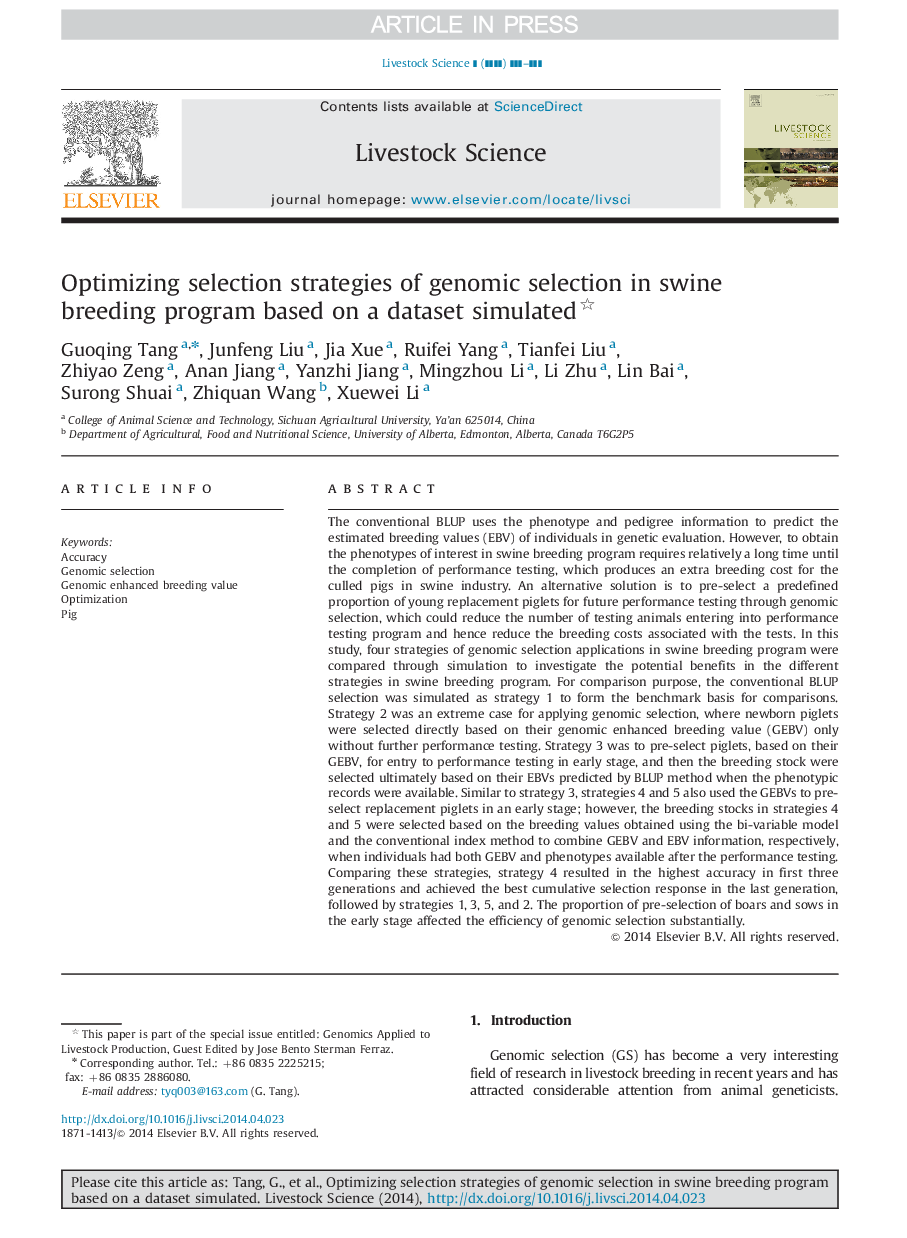| Article ID | Journal | Published Year | Pages | File Type |
|---|---|---|---|---|
| 5790164 | Livestock Science | 2014 | 10 Pages |
Abstract
The conventional BLUP uses the phenotype and pedigree information to predict the estimated breeding values (EBV) of individuals in genetic evaluation. However, to obtain the phenotypes of interest in swine breeding program requires relatively a long time until the completion of performance testing, which produces an extra breeding cost for the culled pigs in swine industry. An alternative solution is to pre-select a predefined proportion of young replacement piglets for future performance testing through genomic selection, which could reduce the number of testing animals entering into performance testing program and hence reduce the breeding costs associated with the tests. In this study, four strategies of genomic selection applications in swine breeding program were compared through simulation to investigate the potential benefits in the different strategies in swine breeding program. For comparison purpose, the conventional BLUP selection was simulated as strategy 1 to form the benchmark basis for comparisons. Strategy 2 was an extreme case for applying genomic selection, where newborn piglets were selected directly based on their genomic enhanced breeding value (GEBV) only without further performance testing. Strategy 3 was to pre-select piglets, based on their GEBV, for entry to performance testing in early stage, and then the breeding stock were selected ultimately based on their EBVs predicted by BLUP method when the phenotypic records were available. Similar to strategy 3, strategies 4 and 5 also used the GEBVs to pre-select replacement piglets in an early stage; however, the breeding stocks in strategies 4 and 5 were selected based on the breeding values obtained using the bi-variable model and the conventional index method to combine GEBV and EBV information, respectively, when individuals had both GEBV and phenotypes available after the performance testing. Comparing these strategies, strategy 4 resulted in the highest accuracy in first three generations and achieved the best cumulative selection response in the last generation, followed by strategies 1, 3, 5, and 2. The proportion of pre-selection of boars and sows in the early stage affected the efficiency of genomic selection substantially.
Related Topics
Life Sciences
Agricultural and Biological Sciences
Animal Science and Zoology
Authors
Guoqing Tang, Junfeng Liu, Jia Xue, Ruifei Yang, Tianfei Liu, Zhiyao Zeng, Anan Jiang, Yanzhi Jiang, Mingzhou Li, Li Zhu, Lin Bai, Surong Shuai, Zhiquan Wang, Xuewei Li,
